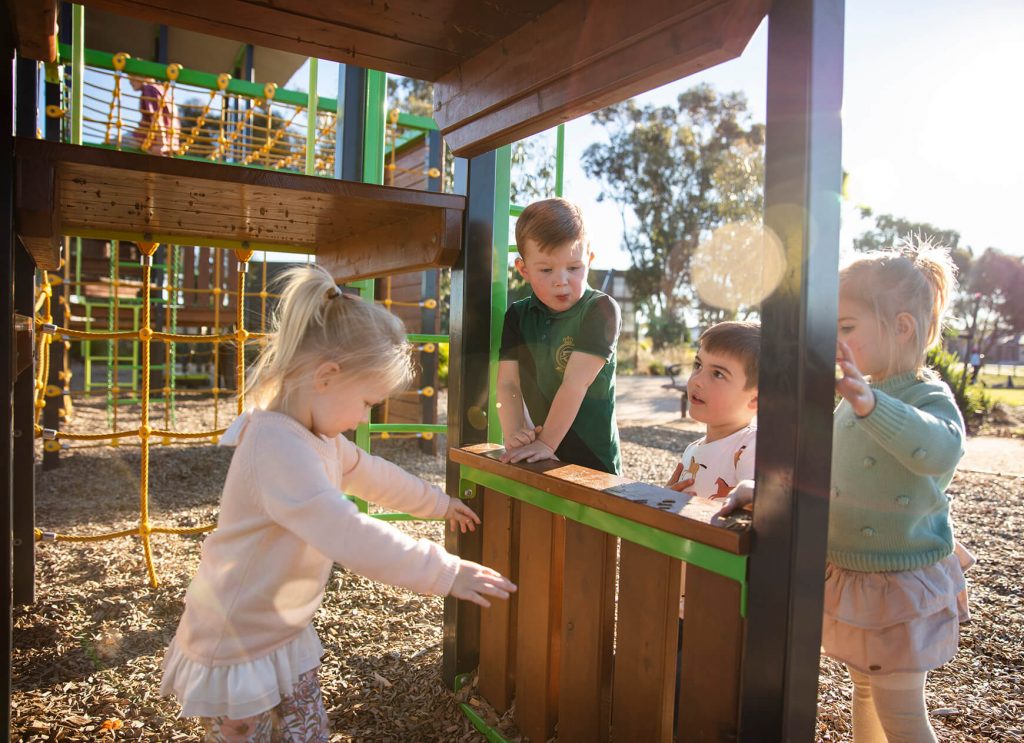Product added to your enquiry
Play Equipment for Toddlers and Preschool Age Children
Maintenance
07 Jun 2021
Designing for all age groups
During our consultative design process, adventure+ often has the opportunity to listen to what parents in the community have to say about park redevelopment.
One of the biggest concerns expressed by parents is that the youngest of children get overlooked in playgrounds. Too often, playground equipment is focused on school-aged children, and is too difficult or even unsafe for the littlest ones to explore.
This is especially frustrating for parents of two or more children, who want playgrounds where their entire family can play together.

So, getting a playground right is not only more enjoyable for children, but more convenient for parents. They can relax knowing that their children are using play equipment that is safe and appropriate.
A good playground designer will strike a balance. Some challenges and risks are an important component of play that mustn’t be overlooked and can be safely and thoughtfully incorporated into playground design to suit all age groups. adventure+ have the following approach:
Easy Access to Play Equipment
One of our first rules of thumb is that access to play items and activities should be easier for juniors than for senior children.
Sadly, we will often see playgrounds that suit only one age group, with no intermediary pieces of equipment, or options for toddlers and pre-preschool children.
adventure+ address this common problem at the start of our design process, by making the transitions between platforms and equipment easier. For example, we swap ladders with staircases or provide access to a high platforms and other equipment using gradient platforms.
We also ensure that there is plenty of ground level play activities suitable for children between ages 2 and 5. This can be done by providing play areas and components under the raised platforms, cubby-like spaces that younger children love to explore.
That said, some young children are still developing a sense of fear and may try to use play equipment that is too big for them. This is where smart playground design can be used to ensure that riskier equipment is only accessible to older children, either through barriers or the height and shape of the play equipment.
Focus on Imaginative, Sensory and Fine Motor Skills but Don’t Forget Active Play
Imaginative and themed play is most loved by children in the younger years. They get absorbed in pretend scenarios and develop vital sensory and fine motor skills while they’re at it.
Using sand or mulch along with special features like shop counters promote both sensory and imaginative play. Young children easily and effortlessly incorporate loose materials into play, such as using leaves as “coins” in their shop.
While imagination is important, active physical activity is also critical. Climbing, balancing, swing and sliding are all critical elements to their fine motor development. A playground should have play equipment like slides, monkey bars and traditional play equipment to provide true play value.
Even in these early years, play isn’t a standalone activity. Research points to the connection between gripping a monkey bar and holding a pencil, while spinning has been shown to help with reading.
Select Play Equipment at Suitable Height
Good playground designers will pay a lot of attention to designing equipment that is age appropriate – and one of the ways they will do this is by paying close attention to the height of play equipment.
Equipment that is too high could be unsafe and even unusable, meanwhile a slide that is too large can pose a risk to the younger age groups. A smaller slide should be added.
A careful assessment of the height and size of play equipment is a vital part of the adventure+ approach.
Create a Junior Play Area
While it’s always nice when siblings can play together, to avoid overcrowding and accidents, it’s a good idea to have a junior play area separate from the senior children
Not only does this have safety benefits, but it also enables children of similar ages to play together and build their social skills.
Separating junior and senior children can help make the playground less daunting for some very young children. Older children play at a faster rate and are noisier than many toddlers and pre-prep children, who can find older children overwhelming and intimidating. Giving younger children their own space ensures they can play at their own pace.
However, it’s not necessary for senior and junior play areas to be miles apart, but distinct areas can make children feel more comfortable. When junior and senior play areas are separate but within eyesight of each other, siblings can stay close, while accessing the right level of challenge for them.
Serious About Play for the Entire Community
adventure+ understand that play is an important developmental opportunity for children and design our playgrounds to suit everyone in the community – from ages 0 to 100!
We work directly with schools, councils, and proprietors to design and install the best playgrounds Australia has to offer.
Call us today on 1300 237 587 to talk about your next play project.